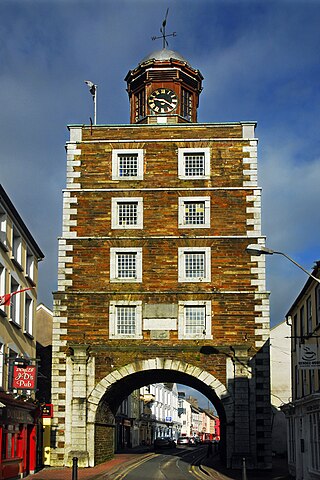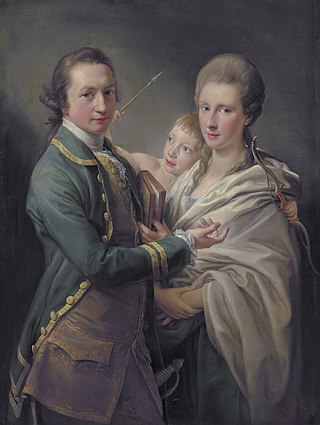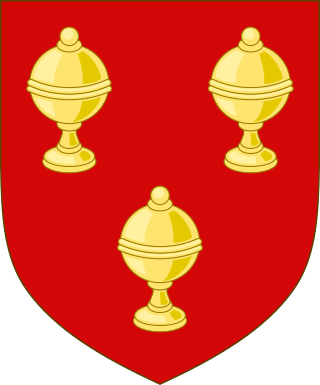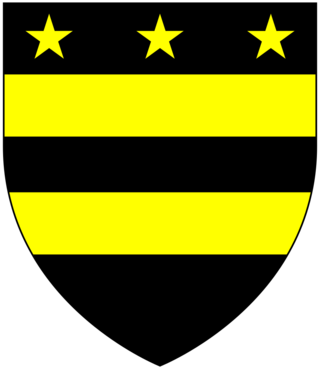Thomas Smyth was an Irish politician.

Youghal is a seaside resort town in County Cork, Ireland. Located on the estuary of the River Blackwater, the town is a former military and economic centre. Located on the edge of a steep riverbank, the town has a long and narrow layout. As of the 2016 census, the population was 7,963.

Francis Almeric Spencer, 1st Baron Churchill DCL FRS was a British peer and Whig politician from the Spencer family.

John Henry Crichton, 4th Earl Erne,, styled Viscount Crichton from 1842 to 1885, was an Anglo-Irish peer and Conservative politician.

Arthur Saunders Gore, 2nd Earl of Arran KP, PC (Ire) styled The Honourable Arthur Gore from 1758 to 1762 and Viscount Sudley from 1762 to 1773, was an Irish peer and politician.

Lady Margaret Boleyn was an Irish noblewoman, the daughter and co-heiress of Thomas Butler, 7th Earl of Ormond. She married Sir William Boleyn and through her eldest son Sir Thomas Boleyn, was the paternal grandmother of Anne Boleyn, second wife of King Henry VIII of England, and great-grandmother of Anne and Henry's daughter, Elizabeth I of England.
The Hon. George Ponsonby, was an Irish politician, who served as a Junior Lord of the Treasury in the governments under Earl Grey and Lord Melbourne from 1832 to 1834.

Charles James Murray was a British Conservative Party politician and diplomat.

Henry Boyle, 3rd Earl of Shannon KP, PC (Ire), styled Viscount Boyle from 1764 until 1807, was among the last surviving Members of the Parliament of Ireland. He represented Cork County in the new Parliament of the United Kingdom from 1801 to 1807. He then briefly served as Member of Parliament for Bandon in 1807, succeeding as Earl of Shannon later in the same year. He served as Custos rotulorum for County Cork from 1807 to his death. He was the first Lord Lieutenant of Cork from 1831 to his death.
Joan Butler, Countess of Carrick was an Irish noblewoman, and the wife of Edmund Butler, Earl of Carrick, Justiciar of Ireland. She was the mother of James Butler, 1st Earl of Ormond.

Elizabeth Capell, Countess of Essex was an English noblewoman, the daughter of Algernon Percy, 10th Earl of Northumberland. She was the wife of Arthur Capell, 1st Earl of Essex. Elizabeth was the subject of a portrait by court painter Sir Peter Lely.
Sir Richard Pyne was an Irish landowner, barrister and judge. He held office as Lord Chief Justice of Ireland from 1695-1709.
There have been two baronetcies created for persons with the surname Tynte, one in the Baronetage of England and one in the Baronetage of Ireland. Both are extinct.
Maurice Crosbie, 1st Baron Brandon, was an Irish politician and peer.

John Richard West, 4th Earl De La Warr, styled The Honourable John West between 1761 and 1783, was a British aristocrat and courtier.

Sir Ralph Freke, 1st Baronet of West Bilney, Norfolk, and Rathbarry, County Cork, was a baronet in the Baronetage of Great Britain and a Member of Parliament in the Irish House of Commons.
John Bligh, 1st Earl of Darnley, was an Irish peer born of an English family.

Sir Edward Harris (1575–1636) of Cornworthy in Devon, was an English-born judge and politician in seventeenth-century Ireland. He was Chief Justice of Munster in Ireland, and sat as Member of Parliament for Clonakilty 1613–15 in the Irish House of Commons of the Parliament of Ireland. He was the grandfather of the faith healer Valentine Greatrakes, and brother of the poet Lady Anne Southwell.
William Worth (c.1646–1721) was an Irish judge of the late seventeenth and early eighteenth centuries.

Catherine Fenton Boyle, Countess of Cork was an Irish aristocrat and wife of Richard Boyle, 1st Earl of Cork.











